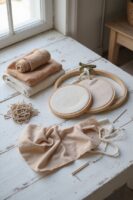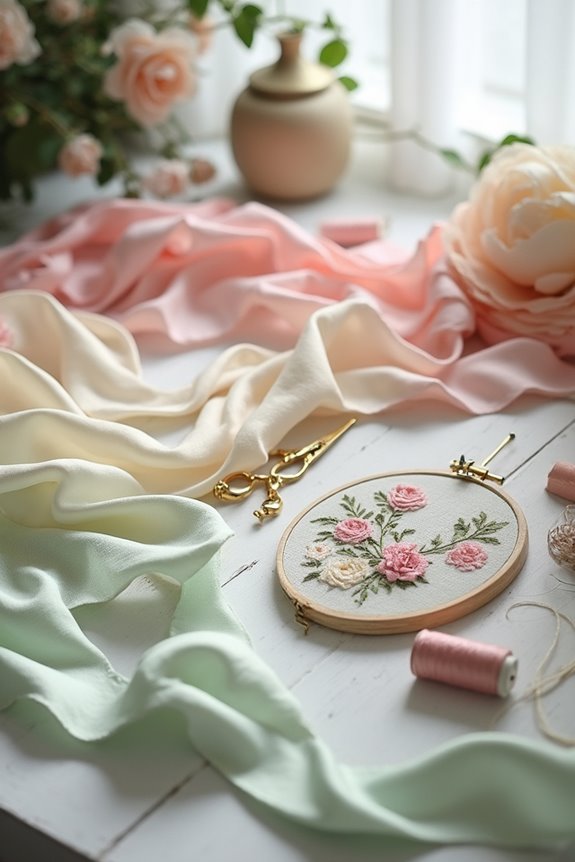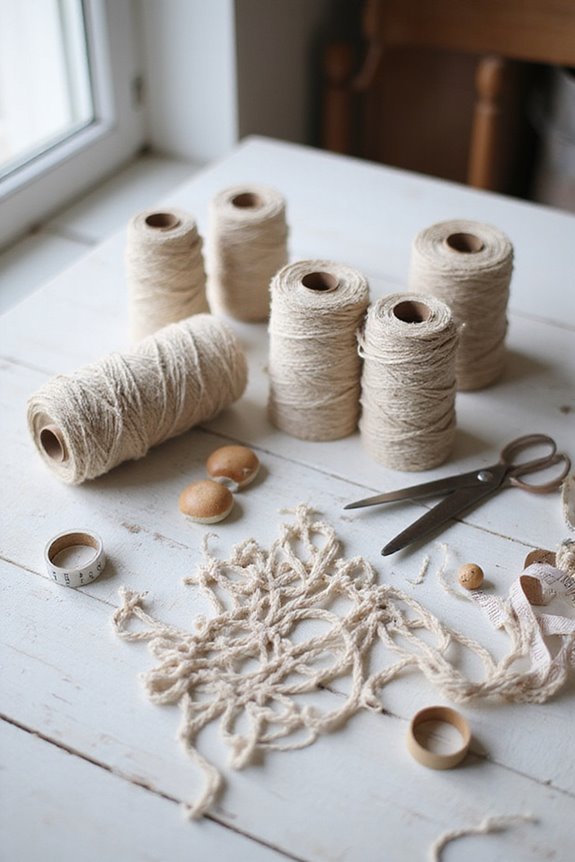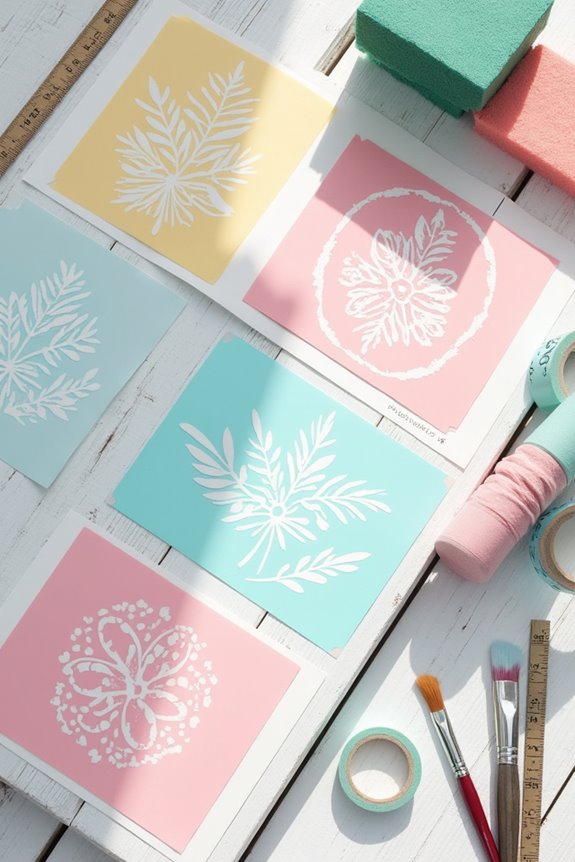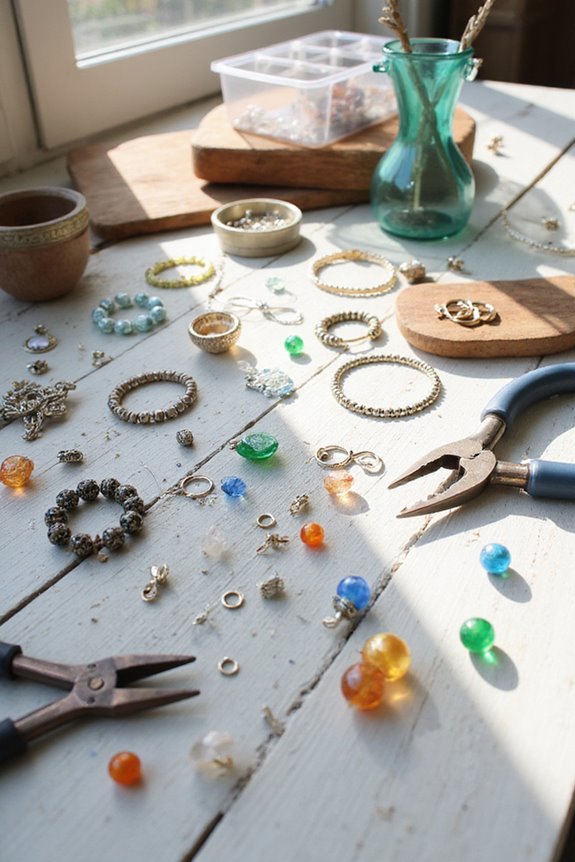When it comes to fabric painting, we can explore some fantastic techniques! 🎨 First, try watercolor painting using a mix of one part fabric medium and two parts watercolor. For texture, sprinkle salt on wet paint. For sharp designs, stencils are great—just use repositionable spray on the back. If abstract’s your style, experiment with tie and dye methods. Finally, block printing allows for repeating designs using permanent dyes. Want to know more amazing techniques? Let’s keep exploring!
Key Takeaways
- Utilize watercolor on fabric by mixing one part fabric medium with two parts watercolor for vibrant results.
- Experiment with salt techniques on wet paint to create unique textures in your designs.
- Apply stenciling methods on tightly woven fabric for crisp, clean edges and detailed designs.
- Try tie and dye techniques for abstract patterns by manipulating the fabric into various shapes before applying dye.
- Employ block printing for repeating designs, ensuring consistent pressure and heat-setting for durability.
Watercolor Painting on Fabric
When we’re diving into watercolor painting on fabric, preparation is key! 🎨 First, we’ll gather all our materials to set ourselves up for success. We’ll need two cups of water: one for wetting the paints and another mixed with fabric medium to guarantee permanence. For our fabric choice, opt for natural fibers like cotton or silk, as they absorb paint beautifully.
Before we start, let’s practice watercolor blending on scraps. This will build our confidence! When mixing paint, combine one part fabric medium with two parts watercolor. Using a brush dampened in plain water helps keep our pigments vibrant. Remember to protect surfaces with freezer paper for easy cleanup. With the right materials and preparation, we’re ready to create stunning fabric designs! 😊 Additionally, ensure that the paint is non-toxic and water-based to promote safe use during your creative process.
Salt Technique for Unique Textures
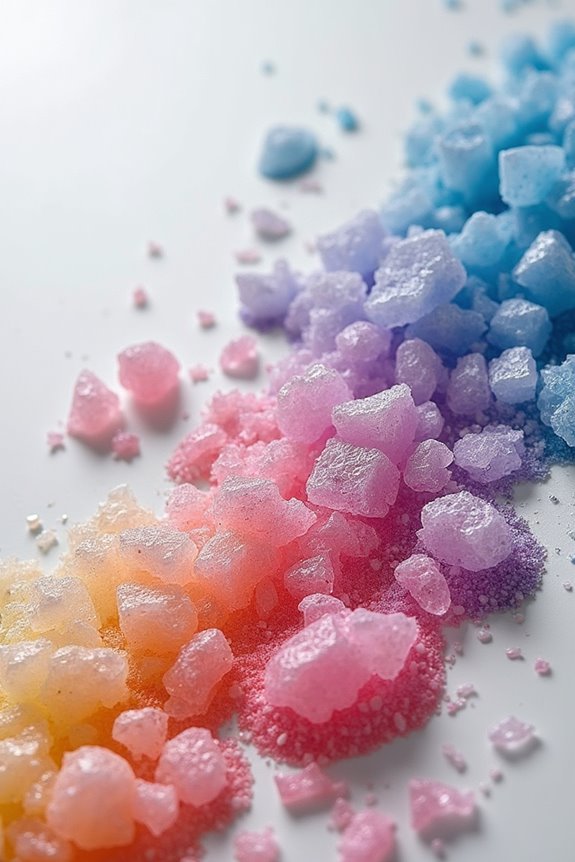
The salt technique offers us a fantastic way to create unique textures on our fabric paintings! 🧂 Start by selecting the right type of salt; each variety brings its own character to our work. For fine patterns, table salt’s your go-to, while sea salt offers a coarser effect.
Before we begin, fabric preparation is key—the fabric should be clean and slightly damp for the best results.
Next, let’s talk about salt application timing. Applying salt immediately after painting on wet fabric allows pigments to swirl and burst effectively. If we wait until the paint dries, we reduce texture formation. So, sprinkle that salt quickly to enhance your beautiful creations with striking textures!
Additionally, using eco-friendly PET stencils can help you achieve precise lettering and designs in your artwork. Experiment, and enjoy this process!
Stenciling for Crisp Designs
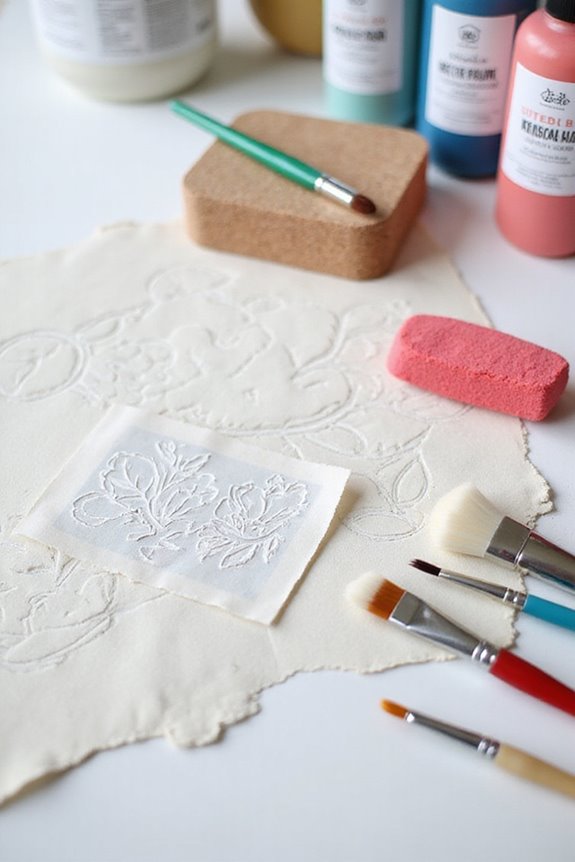
Stenciling can transform your fabric projects, allowing us to achieve crisp, professional-looking designs with ease! 🎨 To start, selecting the right fabric is essential. We should opt for a tighter weave to minimize paint bleeding. Pre-washing the fabric and applying a textile primer in thin layers improves paint adhesion.
For effective stencil adhesive, we can use repositionable spray on the back to prevent shifting. This makes our design sharper! When applying paint, it’s best to use thin layers and a flat brush for even application.
🖌 Remember, dab or stipple the paint instead of dragging the brush. Additionally, using fabric paint squeeze bottles enhances precision and control during application. Once dry, heat set the design to guarantee durability. With these tips, let’s create stunning fabric art together!
Tie and Dye for Abstract Patterns
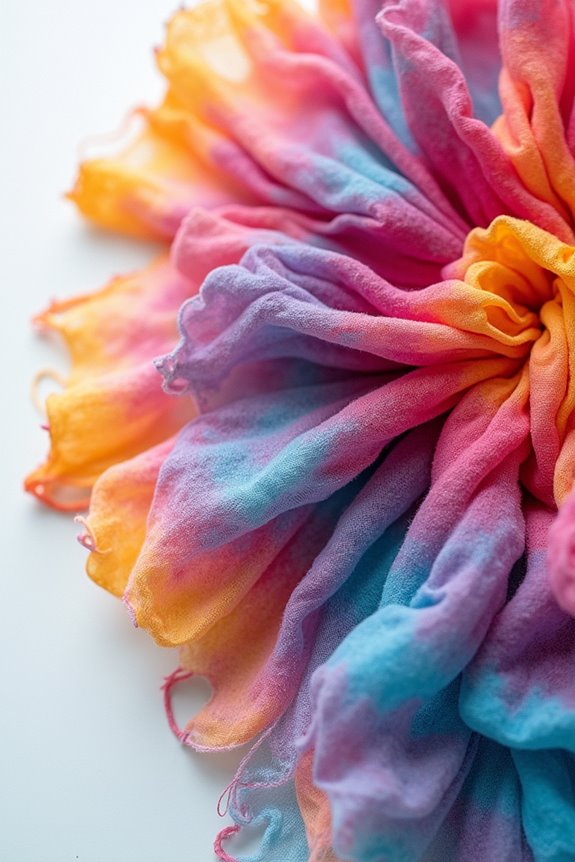
Tie-dyeing can be a fantastic way to create stunning abstract patterns on fabric! 🌈 Together, we can explore various techniques that will make our fabric come alive with vibrant colors and unique designs.
- Crumple Patterns: Scrunch the fabric into a tight ball to achieve marble-like effects.
- Spiral Binding: Twist fabric from the center into a spiral and secure with rubber bands for swirling patterns.
- Bullseye Techniques: Pull fabric into a tube and tie at intervals for eye-catching rings.
- Reverse Tie Dye: Apply bleach to your colored fabric using tie-dye folds for striking contrasts. Using high-quality nylon and synthetic brushes will help achieve even application of dyes and paints.
Block Printing for Repeating Designs
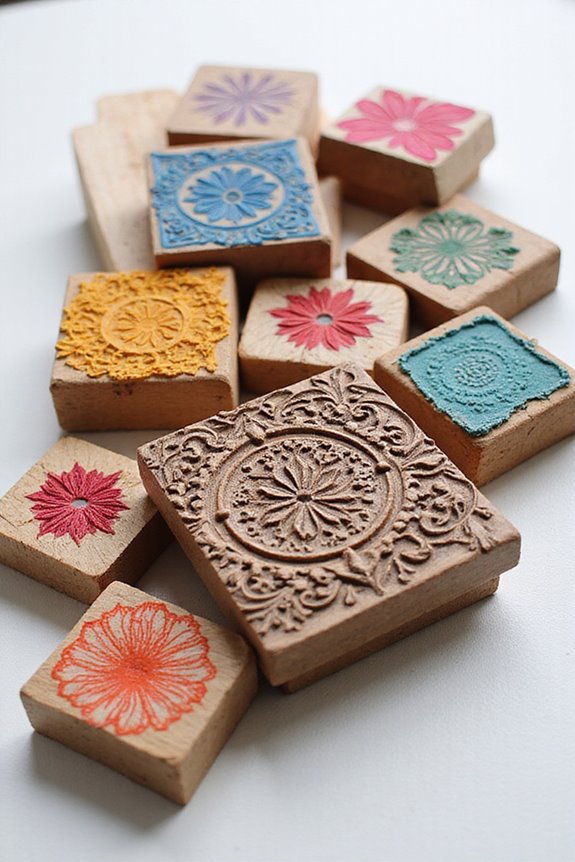
To guarantee seamless repeats, let’s draw the block outline and divide the design into segments. By rearranging these pieces, we create a cohesive block design.
When we print, it’s essential to apply consistent pressure for even ink coverage. Remember to heat-set the fabric after printing to secure your design! 🔥 Additionally, using permanent dyes will ensure that your printed designs remain vibrant even after multiple washes.
With practice, you’ll master various printing methods, like grid or diamond patterns, enhancing your projects. 🌈 Ready to get started? Let’s bring our fabric designs to life!
Creative Layering and Mixing Techniques
Creative layering and mixing techniques can truly elevate our fabric painting projects, giving them depth and vibrancy. 🎨 We’ll explore a variety of approaches that allow us to blend colors and textures seamlessly.
To start, lightly misting fabric with water helps in layering colors without harsh lines. Applying transparent paints with broad brush strokes lets us create beautiful overlaps. Don’t forget to scrunch the fabric for added texture!
When mixing mediums, use a smooth palette to combine colors thoroughly. We should experiment with primary colors to develop unique shades. Using separate brushes for each color will prevent muddiness.
Lastly, incorporating metallics can add that extra sparkle. By using these techniques, we can enhance our fabric painting with stunning results! 🌟
Frequently Asked Questions
What Type of Fabric Works Best for Painting Techniques?
When choosing fabric for painting techniques, we should prioritize canvas selection and consider fabric texture. Tightly woven fabrics offer smoother finishes, while textured options add depth. We’ll experiment to find what suits our style best.
How Do I Set Fabric Paint After It Dries?
Once we’ve got our fabric paint dried, we heat set it like it’s the final step to fabric immortality! Using various curing methods, we guarantee vibrant designs survive the test of time and washing.
Can I Mix Different Fabric Paint Brands Together?
We can mix different fabric paint brands, but we need to evaluate color compatibility and brand differences carefully. It’s wise to test small batches first, ensuring they blend well without compromising our project’s quality.
Is It Safe to Wash Painted Fabric Items?
Yes, it’s safe to wash painted fabric items if we follow proper fabric care. We should use gentle washing methods, turn items inside out, and allow adequate drying and curing time before washing to guarantee longevity.
How Can I Fix Mistakes While Fabric Painting?
When we encounter those unexpected moments in our crafting journey, we can embrace effective correction methods, utilizing gentle paint removal techniques to restore our fabric masterpieces. Together, let’s turn imperfections into unique expressions of creativity.



